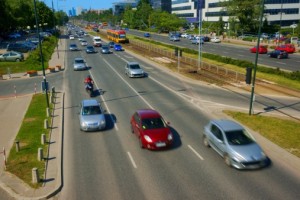 Human error accounts for the overwhelming majority of car accidents. But what happens when a human has no control over the vehicle – when the vehicle itself is making the driving decisions?
Human error accounts for the overwhelming majority of car accidents. But what happens when a human has no control over the vehicle – when the vehicle itself is making the driving decisions?
Questions related to driverless cars are making the insurance industry’s collective head spin, as insurers try to determine how they will affect insurance rates and road safety.
Google says it will have a fully automated car ready for launch by 2017. Many car makers anticipate releasing driverless cars by 2020. It’s clear that driverless cars are not just in the stuff of futuristic movies – they will soon be reality.
Challenge for Insurers
Insurance companies employ actuaries, people whose job is to analyze risks and determine the potential costs of insurance for certain drivers. Their jobs are being made significantly more difficult by the prospect of automated cars.
When self-driving cars take to the road, no longer will your driving record hold most of the weight in determining how much of a risk you are to the insurance company. Instead, insurance representatives will determine the accident risks posed by your car, something proving to be difficult so far.
As the Insurance Journal reports in a recent article, one problem is that automated vehicles will be overrun with data, potentially giving insurance companies too much information to sort through. Driverless cars will create about 750 megabytes per minute of data, which normally are an actuary’s primary tool in determining risk. However, insurance actuaries have never dealt with this amount of data before.
The article suggests that as driverless technology improves, it may serve to protect drivers from accident liability altogether. After all, if the car is doing everything, how could a driver be held responsible? Instead, the vehicle manufacturer or the company that installed the automation program could be responsible for a vehicle defect.
Another issue: Not all cars will be automated. As driverless vehicles hit the market, they will share the road with others that aren’t automated at all or are partially automated— factors that will affect risks and liability in car accidents.
Many partially automated vehicles will allow the driver to take control, which would affect who should be held responsible for an accident.
Other Concerns
Time Magazine recently brought up another concern with self-driving cars. If, for instance, you are driving on the coast with the ocean on one side and a cliff on the other, and an out-of-control car coming toward you, you would have a moral decision to make. You could choose to collide with the vehicle, possibly causing serious injury to people in both vehicles, you could allow the other car to run you off the road, or you could cut between the mountain and the oncoming vehicle, possibly sending the other car off the cliff to the ocean.
What would you do, and more importantly, what would an automated car do?
Automated cars will have to make split-second decisions. Will they divert your route to drive you by an advertiser’s business? Will they jeopardize your safety to save someone else’s life? Will they make different decisions depending on the number of people in your car?
All of these questions and much more need to be sorted out before all car occupants can cruise down the road, completely absorbed in a book, movie or conversation. While self-driving cars may help keep our roads safer and they may be inevitable, much work must be done before we can fully place our trust in a machine.
